
Ferocactus echidne is a barrel cactus in the genus Ferocactus. It is found in nature in Mexico. This cactus is known commonly as Sonora barrel, Coville's barrel cactus, Emory's barrel cactus, and traveler's friend. This plant is often sold as a houseplant.
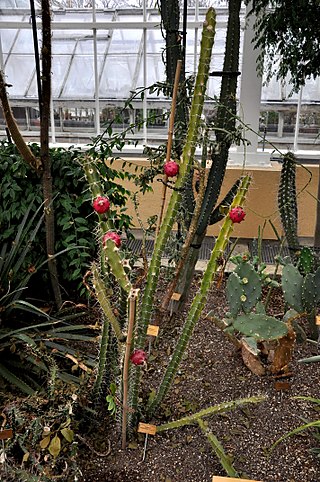
Harrisia bonplandii is a species of cactus. The cactus plants in the Gran Chaco are generally called tuna and this specific variety reina de la noche. Fruits and roots are edible and well known to the native nations of the Gran Chaco.
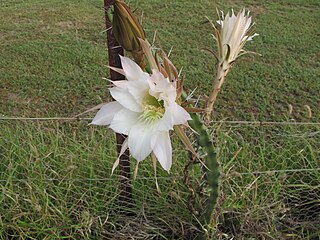
Harrisia pomanensis is a species of cactus.

Ferocactus peninsulae is a barrel cactus in the genus Ferocactus of the family Cactaceae.
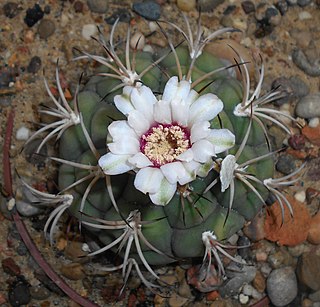
Gymnocalycium anisitsii is a globular cactus belonging to the family Cactaceae. The specific epithet honors the Hungarian pharmacist Dá

Thelocactus rinconensis, synonyms including Thelocactus nidulans, is a species of cactus. It is endemic to north-east Mexico.

Ferocactus alamosanus is a species of Ferocactus from Mexico.

Ferocactus diguetii, commonly known as the giant barrel cactus, is the largest species of barrel cactus in the genus Ferocactus. It is an insular species endemic to several of Baja California Sur's southern islands in the Gulf of California. As the superlative giant of the barrel cacti, it reaches heights of up to 4 metres (13 ft) and diameters of 1 metre (3.3 ft) in the wild, a result of island gigantism. The species has red flowers that bloom from March to May. Although restricted in range, this species grows in protected habitat and lacks major threats.
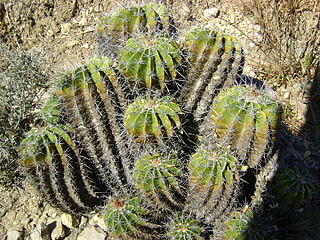
Ferocactus flavovirens is a species of Ferocactus from Mexico.

Harrisia tortuosa is a species of cactus in the Trichocereeae tribe.

Gymnocalycium monvillei is a species of Gymnocalycium from Argentina.
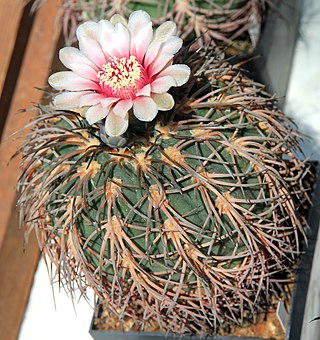
Gymnocalycium spegazzinii is a species of Gymnocalycium from Argentina and Bolivia named after the botanist C. L. Spegazzini.

Lobivia ferox, is a species of Lobivia found in Bolivia and Argentina.

Lobivia pampana is a species of Lobivia found in Peru.

Melocactus bahiensis is a species of Melocactus found in Bahia, Brazil.

Pelecyphora chihuahuensis is a species of flowering plant in the family Cactaceae, native to Mexico.

Pelecyphora dasyacantha is a species of flowering plant in the family Cactaceae, native to the Mexico.

Borzicactus sepium is a species of Borzicactus found in Ecuador.

Ferocactus uncinatus is a species of Ferocactus found in Mexico and United States in Texas.

Cochemiea poselgeri is a species of Cochemiea found in Mexico

























